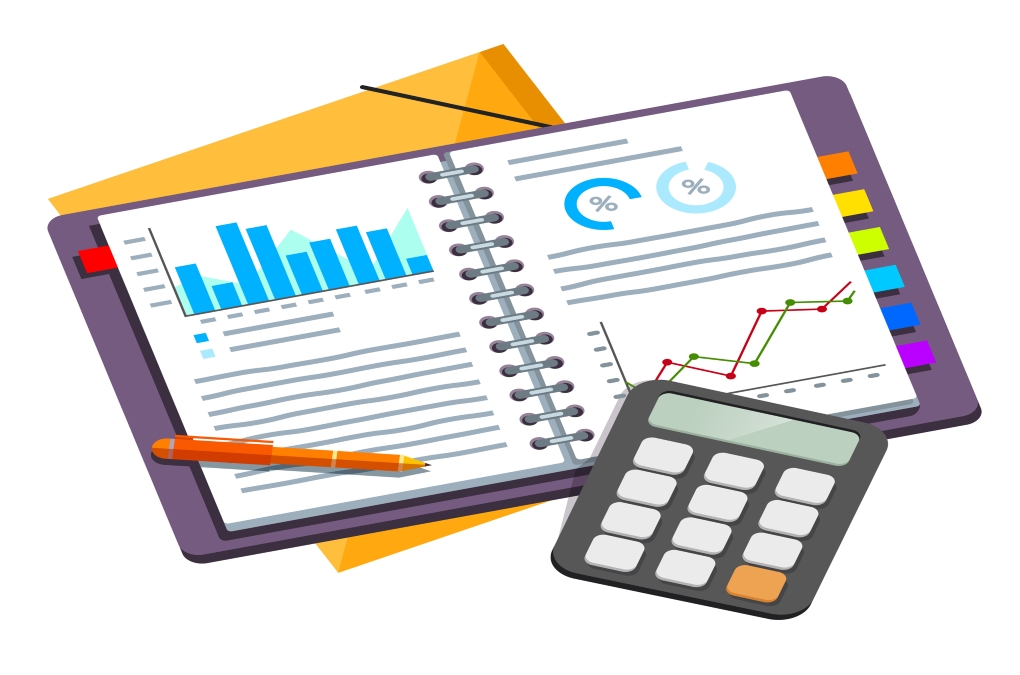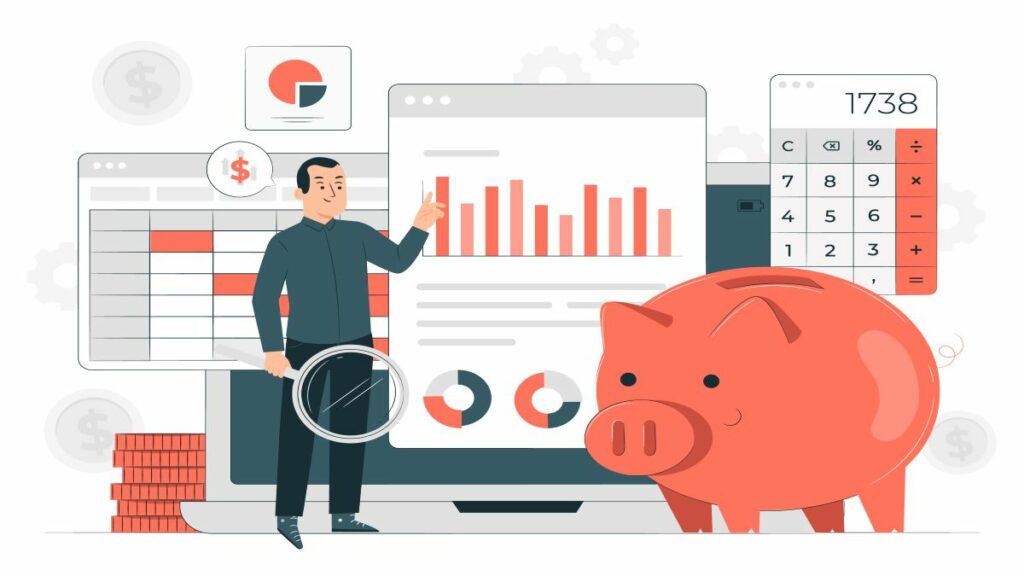Investing is not a new topic but is pretty crucial in day-to-day life. Isn’t there such thing as a stupid question? Still, if you’re anything like us, you’re afraid to inquire about investing.
Bonds and stocks. Don’t they sound enticing? It’s complicated, strange, and intimidating, yet you’re secretly captivated by it (if you’re anything like us).
- When it comes to investing, each investment must be unique and tailored to the demands of the particular investor.
- As a result, it is frequently recommended that the best way to approach financial planning is with the assistance of a financial counsellor.
- Various criteria such as risk tolerance, investment horizon, and financial goals should be considered.
- Nevertheless, an effective mutual fund portfolio should include multiple asset classes and market capitalization schemes.
- Also, debt and gold funds should not be overlooked.
Whether you’re new to investing or a seasoned pro, you’re bound to have concerns about how to support effectively. You’re not alone: I chatted with several financial professionals to understand the most often asked investment questions and then sought solutions to these frequently asked questions. Here’s what the experts had to say on themes spanning from how to invest with little capital to how to modify your approach as you age.
Table of Content:
1. Should I invest my excess money or pay off debt?

To clear this up, you must first choose how you want your money to work for you. Compare the amount of money you may generate from alternative assets against the amount of cash you would spend on your debt.
If you make very little on investments than you pay on loans, you should pay it off.
Assume you have $1,000 in a savings account with a 4-percentage-point yearly return. Meanwhile, your $1,000 credit card bill is accruing annual interest at a rate of 19%. As a result, your savings account yields $40, and your credit card costs $190.
The differential between what you gained on the bank account and what you spent in interest on the credit card amount results in a 15% yearly net loss, or $150. It becomes worse when you consider the tax implications.
The interest on your savings account is taxed, and you must pay your credit card payment using after-tax cash.
In the above example, it is preferable to spend your additional income to pay down the high-interest loan balance. The same logic would apply if you were to put your excess money into a CD, mutual fund, or other investment.
2. What is the Distinction between Growth and Value Investment?

When you invest for growth, you usually look for long-term capital appreciation. You will most likely select assets where you anticipate the share price will rise faster than average in the future years. Growth stocks have the potential to beat slower-growing assets such as income stocks since profits are often reinvested in the firm rather than paid to shareholders as a dividend.
- Growth stocks may be quite volatile.
- Investing in a growth mutual fund is one strategy to reduce the impact of volatility on your portfolio.
- You’ll benefit from rapid diversification.
Though diversity cannot assure a profit or protect against loss. In addition, an actively managed mutual fund provides professional management experience.
A value investor hunts out bargains and selects low-price investments compared to profits, sales, net current assets, and the valuation of the issuing company.
Even if the issuing firm is reliable and has a track record of consistent development, a value investor may refuse a famous blue chip stock because the price per share is too high.
A mutual fund manager can focus on growth investing, value investing, or combining the two. Instead, a value investor aims to purchase shares in a quality firm that is momentarily out of favour or is undervalued for another reason. As a result, the value investor forecasts that the share price will probably return to a higher level as the firm regains popularity and the market forces the stock price back up.
Mention: While investing in a mutual fund, evaluate the fund’s investment goals, risks, fees, and costs, as detailed in the prospectus. Before investing, thoroughly read it
3. How Do You Create An Equity Portfolio?

It is necessary to build an equity portfolio. Rising inflation and shrinking interest rates on fixed-income products make creating a solid stock portfolio critical, which can help you achieve long-term inflation-beating returns.
Over the long run, equities can provide inflation-indexed returns and create wealth for purposes such as children’s education, retirement, etc.
- The first step in constructing a solid equity portfolio is asset allocation.
- As the name implies, an equity portfolio comprises your equity investments such as stocks, mutual funds, etc.
- It might be a large cap, mid cap, or small cap equities among stocks, ELSS, aggressive hybrid fund, among mutual funds.
Two ways to invest in equity are direct stocks and mutual funds. You can invest directly in stocks if you have the abilities and expertise to watch markets and interpret figures. On the other hand, mutual funds are a better option if you don’t.
It is another critical consideration in determining the composition of your equity portfolio. Risk tolerance refers to your ability to tolerate risk. It should be noted that stocks are volatile, particularly in the near term. As a result, while investing in shares, you must take a long-term perspective.
After determining your asset allocation and risk tolerance, you must divide your investment into appropriate asset financial instruments. Divide equities into subclasses and spread your money among large-cap, mid-cap, and small-cap securities from various industries and firms.
Analyze firms using stock screeners and perform in-depth research to identify market prospects.
Split your equity mutual fund investments in the same way you divide your stock investments into extensive, mid, and small-cap stocks. You might also consider investing in exchange-traded funds (ETFs), which are traded like stocks.
When rebalancing your portfolio, you must adopt a planned approach. It should be noted that income tax may be required during the rebalancing process. For example, depending on the holding term, you may be required to pay capital gains tax if you redeem stocks or specific equity mutual funds.
4. Can I Adjust the Duration of My Investment Once I've begun Investing?

Investing in mutual funds via SIP provides a great deal of freedom. Investors may choose how much they want to invest, how long they want to invest, and how frequently they wish to invest (weekly, monthly, quarterly, etc.).
But, once you start a SIP, are you obligated to stick to the initial decisions you made until the conclusion of your SIP tenure?
- NO is the answer.
- SIPs are one of the most outstanding long-term investing solutions available.
For example, suppose you begin a monthly SIP investment of Usd 5,000 in a fund for just a 7-year term. In that case, you can expand or decrease its tenure at any time and lower or extend your SIP instalment based on your financial situation. These adaptable qualities make them simple and effective.
That depends on one’s investment objectives, and most goals are time-driven. There are schemes ideal for short periods, other plans suitable for more extended periods, and schemes suitable for any length.
Discuss your financial goals with your Mutual Fund distributor or investment advisor before deciding where to invest. Before selecting the best Mutual Fund programme to invest your hard-earned money in, you must conduct thorough research.
When evaluating strategies to pick from, don’t forget to compare their riskiness. While investors frequently look at plan categories and best-ranked schemes within those categories, they typically overlook risk indications for these schemes.
While several risk indicators, such as Standard Deviation, Beta, and Sharpe Ratio, are offered in each scheme’s factsheet. The product label is the essential item to check for.
5. What Exactly is Asset Allocation, and How will it Function?

Selecting how to split your investment funds among several asset categories is known as asset allocation. The technique entails allocating your investing money among asset classes that do not all adapt to market pressures in the same manner at the same time.
- The most frequent components of an asset allocation plan are stocks, bonds, and cash or cash alternatives.
- Others, though, may be accessible and appropriate.
- The overall objective is to reduce volatility while increasing return (however, asset allocation cannot guarantee a profit or remove the chance of a loss).
Though there are no certainties, if your investments in one area perform poorly, you should have assets in another category that perform well. Profits in the latter may balance losses in the former, reducing the total impact on your portfolio. Note that all investing has risks, including the possibility of losing money, and there is no assurance that any investment plan will be successful.
Your risk tolerance, investment goals, timeframe, or how long you intend to keep your money invested.
The number of asset categories you choose for your portfolio and the proportion of your portfolio dollars you assign to each category will be primarily determined by the size of your portfolio.
An essential portfolio may have as few as three investment types, with a percentage of total funds allocated to cash alternatives, bonds, and equities, for example. A more complicated portfolio may incorporate more asset categories or subcategorize each more broad asset category.
For example, the category “stocks” may be further subdivided into the extensive cap, small-cap, foreign, high-tech, etc.
Choosing an effective asset allocation strategy may be the most significant single investing choice since it will likely impact your total return more than individual investment selection. If you want expert assistance, do not be afraid to seek it.
Also, check your portfolio regularly to verify that your selected investment mix continues to meet your investing needs as your conditions change over time.
Conclusion

You may check the Central Registration Depository to see whether your broker has a disciplinary history (CRD). CRD information can be obtained from your state securities regulator or FINRA.
Your state securities regulator may be able to provide you with more details than FINRA, particularly about investor complaints, so you should check with them first. Contact information for your state securities regulator may be found on the North American Securities Administrators Association’s website, www.nasaa.org.
Before doing business with a financial expert or firm with a history of complaints or difficulties with authorities, you should conduct extensive research. You should also be aware that you may be liable if your financial expert or firm goes out of business or declares bankruptcy.
Also, even if an arbitrator or a court finds it in your favour. You may not be able to recover your money if your financial expert or their firm goes out of business or declares bankruptcy.
- How does the investment function? Do you know enough about the investment to describe it to someone else?
- What are your objectives? Do you want this investment to provide security, income, or growth? Or both income and growth?
- What are the risks associated with this investment? Are you willing to take these risks?
- How much do you anticipate earning from this investment? Is this possible?
- How long do you intend to invest? Is this an investment for the short, medium, or long term?
- What are the costs of purchasing, holding, and selling the investment? And will you pay taxes on your earnings?
- Do you have any other investments? What is the relationship between this investment and your other investments? What effect will it have on your asset mix?
Your goals and time period determine your portfolio’s ratio of equities to bonds. If you are young and investing for long-term growth, you should buy more stocks than bonds. Stocks offer far more significant potential for gain. Still, they are only ideal for investors who have the patience to wait out the periodic downturns in the stock market.
If you are in your twenties or thirties, it is usually assumed that you should invest between 10% and 30% of your income in bonds. As you get closer to retirement, you’ll start to invest more in bonds. The precise ratio is determined by your comfort level with a significant ol’ stock market downturn and your emotional ability to wait it out. During a market collapse, the worst thing you can do is panic and sell your investments.”
- When it comes to investing, each investment must be unique and tailored to the demands of the particular investor.
- As a result, it is frequently recommended that the best way to approach financial planning is with the assistance of a financial counsellor.
- Various criteria such as risk tolerance, investment horizon, and financial goals should be considered.
- Nevertheless, an effective mutual fund portfolio should include multiple asset classes and market capitalization schemes.
- Also, debt and gold funds should not be overlooked.




 Our users have reported an average of $5K+ positive impact on their personal finances
Our users have reported an average of $5K+ positive impact on their personal finances
